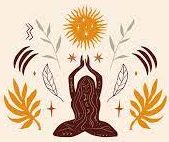‘लाडका भाऊ योजने’साठी कसा कराल अर्ज?
*✅’लाडका भाऊ योजने’साठी कसा कराल अर्ज? पाहा संपूर्ण प्रक्रिया**_💁♀️लाडका भाऊ योजना महाराष्ट्र अंतर्गत प्रशिक्षणादरम्यान युवकांना दरमहा 10,000 रुपयांची आर्थिक मदत दिली जाणार आहे. आता ‘मुख्यमंत्री माझी लाडकी बहिण’ या योजनेपाठोपाठ आता मुख्यमंत्री एकनाथ शिंदेंनी लाडका भाऊ या योजनेची घोषणा केली आहे. मुख्यमंत्री एकनाथ शिंदेंनी आषाढी एकादशीनिमित्त पंढरपुरात केलेल्या भाषणादरम्यान या योजनेची घोषणा केली, पानंतर आता…
